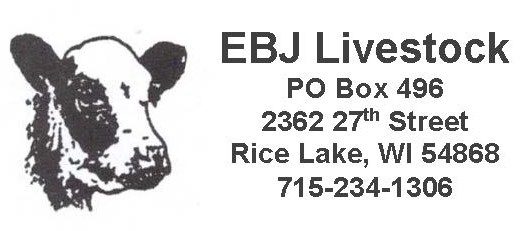Hitching post 1
A cow’s primary purpose is to bring a live calf to the weaning pen every 365 days. It is more economically important than the calf’s weaning weight or subsequent performance. It is the manager’s responsibility to provide the right environment for the cow to meet that expectation, which includes adequate nutrition, a comprehensive herd health program and bull management. In my experience, inadequate nutrition is the most common cause of a failure in reproductive performance.
Hitching post 2
A thin or underfed cow will not rebreed until she is in adequate body condition or on a nutrition plan that meets her nutritional needs.
Hitching post 3
Grazing is the most economical means of providing a cow’s nutritional needs. The less supplemental feed and dry matter needed, the more potential for profit in the long run.
Hitching post 4
The first three hitching posts are intricately linked with a fourth. A cow’s nutritional requirements vary significantly during the year and are driven mainly by her reproduction stage, from her lowest needs after weaning and in mid-gestation to her highest needs after calving when she reaches peak lactation. A cow’s protein needs likely double, and energy needs can increase one-and-a-half times between these two periods.
To connect the dots, an operation is most successful when it matches cows’ nutritional needs to the quality and quantity of the forage base through appropriate stocking rate and grazing management. The interconnectivity and applicability of these “hitching posts” apply to all operations, regardless of calving season.
Most of the producers I’ve worked with during my tenure have calved in the spring. They understand the “hitching posts” and accept that the warm-season perennial forage base in the Southern Great Plains fits that timing best (hitching post 3).
Despite the potential for lower conception rates in the heat of summer and the traditional decline in calf prices at weaning in the fall due to the abundant supply, these producers maintain profitability primarily by minimizing winter feed costs (hitching post 4). They also manage calf marketing to mitigate the low, seasonal calf prices.
I also have worked with some fall-calving producers. There are basically two types of producers who maintain a fall-calving herd. The most successful are those who deliberately manage for a fall-calving herd, with full command of the applicable “hitching posts.” Most are either top-level, low-cost efficient producers with warm-season forages, or they have a cool-season perennial forage component that alleviates much, if not all, of the winter feed costs for a lactating cow (hitching post 4).
Regardless, producers are able to capitalize on the several advantages to fall calving. Fall-born calves are big enough and old enough to take advantage of the high-quality forage flush from early spring to weaning in early summer. As a result, fall-born calves usually wean heavier than spring-born calves. A second big advantage is the seasonal price trend for weaned calves is historically higher at that time of year than in the fall for spring-born calves.
One of the hardest challenges in my consultation experience is the producer who calves in the spring for all the right reasons but manages a fall-calving herd to slide cows into that fail to rebreed in the summer. Historically, the advice has been to sell open cows, which I usually still recommend. There are value-added practices to marketing cull cows that should be considered.
Also, the economics of price/outlook scenarios can sometimes support giving an open cow another chance to breed versus replacing her. However, in partial budgets to justify keeping her, I have never seen any consideration given to the significant risk that the cow will fail to breed again. That is why I nearly always advise against a default fall-calving herd.
There are many reasons a cow fails to rebreed. If the producer failed to provide adequate nutrition, disease protection or bull power, there are serious management deficiencies to correct. Until the deficiencies are corrected, sliding a cow to a fall-calving herd won’t make a difference. If the producer did his or her part, the reasons for an open cow are many and varied.
The cow could be too big or produce too much milk for the environment the manager is willing and able to provide. She could have developed a reproductive tract problem or could have low fertility. In any of these cases, the chances are high for the cow to remain a slow or non-breeder, providing a poor likelihood that a cow given a second chance will bring a calf to the weaning pen every 365 days. ![]()
PHOTO: Fall-calving calves have an advantage of starting with quality forage. Photo courtesy of Noble Foundation.









